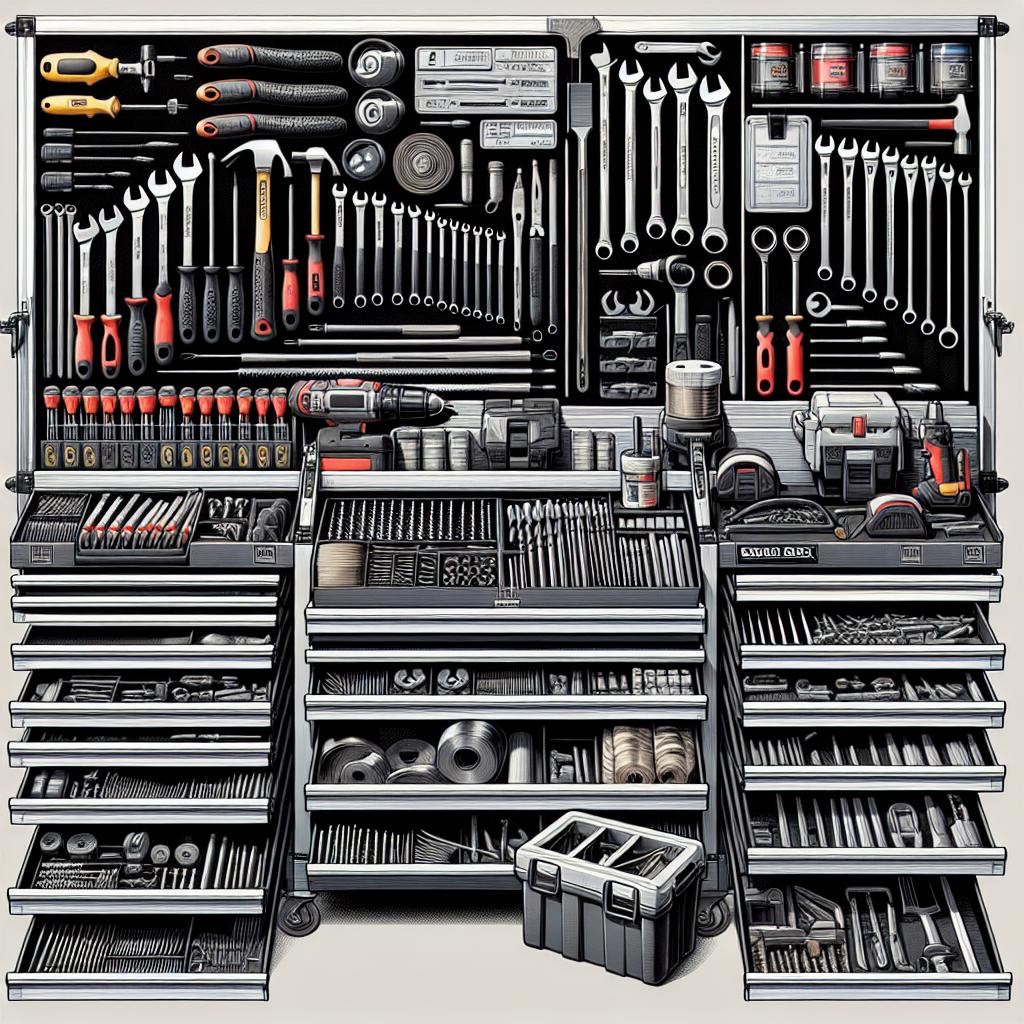A Beginner’s Guide to Mini Split AC Installation Tools and Equipment
As the sweltering days of summer approach, the promise of a cool, comfortable home becomes increasingly enticing. For many homeowners looking to beat the heat, mini split air conditioning systems offer an efficient and flexible cooling solution. However, before you can enjoy the refreshing breeze, there’s a crucial step to navigate: installation. Whether you’re a DIY enthusiast or embarking on your first home improvement project, understanding the essential tools and equipment for installing a mini split AC system is key to a successful setup. In this beginner’s guide, we’ll walk you through the indispensable tools you’ll need, along with some tips and tricks to make the installation process smooth and manageable. So, roll up your sleeves, grab your toolbox, and let’s get started on transforming your space into a cool sanctuary!
Understanding the Essential Tools for Mini Split AC Installation
When it comes to installing a mini split AC, having the right tools is paramount for a successful setup. Start with the basic tools that every installer needs in their arsenal. A good-quality drill and drill bits are essential for making holes in walls to mount the indoor unit. Additionally, a level is crucial to ensure the unit is properly aligned, and a stud finder will help avoid drilling into plumbing or electrical lines. Don’t forget a refrigerant gauge set to measure and maintain proper pressure during installation and troubleshooting.
In addition to the basics, consider investing in some specialized equipment to enhance your efficiency. A vacuum pump is necessary for removing any moisture and air from the refrigerant lines, preventing any system failures. You may also wish to have on hand a manifold gauge set, which allows for precise monitoring of refrigerant levels. An assortment of wrenches and sockets will help you tighten fittings and connections securely. The following table summarizes essential tools for mini split AC installation:
| Tool | Purpose |
|---|---|
| Drill | Mount indoor unit |
| Level | Ensure proper alignment |
| Vacuum Pump | Remove moisture from lines |
| Manifold Gauge Set | Monitor refrigerant levels |
| Wrenches/Sockets | Tighten fittings |

Key Equipment for a Successful Setup
When embarking on the journey of installing a mini-split AC system, having the right tools and equipment is essential for ensuring a smooth and efficient setup. Start by gathering the fundamental tools that will assist you throughout the installation process. Key items include:
- Refrigerant Gauges: Crucial for measuring the pressure in your AC system.
- Pipe Wrench: Necessary for securing and fitting the copper refrigerant pipes.
- Drill and Appropriate Bits: Helpful for creating holes in walls for pipe passage.
- Level: Ensures your indoor and outdoor units are perfectly aligned.
- Screwdrivers: A variety of sizes will help with different screws used in the installation.
Besides the basic tools, don’t overlook the safety and ancillary equipment that will make your installation not only successful but also safe. Having the right gear minimizes risks while working with electrical components and refrigerants. Consider adding these essentials to your toolkit:
- Safety Glasses: Protects your eyes from debris and harmful substances.
- Gloves: Prevents cuts and exposure to refrigerants.
- Vacuum Pump: Essential for removing air and moisture from the refrigerant lines.
- Manifold Gauge Set: For charging and checking the refrigerant levels.
- Leak Detector: Ensures that your system is leak-free.

Safety Gear Every Installer Should Have
When diving into the world of mini split AC installation, safety must be a top priority. Installers should equip themselves with the proper safety gear to protect against the various hazards encountered on the job. Protective eyewear is essential to shield your eyes from debris and refrigerants. Heavy-duty gloves will ensure your hands are safeguarded from sharp tools or components, while steel-toed boots provide the necessary support and protection against heavy equipment. Additionally, a hard hat is vital in environments where overhead hazards may present risks, keeping your head safe while working.
Moreover, keeping a first-aid kit on hand is a smart choice, prepared for any minor injuries that may occur during installation tasks. Respirators or masks can be crucial when dealing with chemical fumes or dust particles, ensuring clean air intake while you work. consider having a high-visibility vest to enhance your presence on-site, especially in busy or hazardous environments. By investing in these essential items, you not only prioritize your safety but also boost your confidence as you embark on your mini split AC installation journey.

Tips for Efficiently Organizing Your Tool Kit
Efficient organization can drastically improve your workflow during the installation of mini split AC systems. Start by designating a specific area for your tool kit, keeping it clean and accessible. Arrange your tools in a manner that allows for easy identification, using color-coded bins or labels. This way, everything from wrenches to measuring tapes is stored logically, saving you time when you’re in the middle of a project. Consider utilizing tool belts or aprons that help keep essential tools close at hand, minimizing the need to frequently return to your kit.
Another effective strategy is to categorize your tools based on their function. For instance, group your HVAC-specific tools together, separate from general-purpose tools. This will streamline your searching process, especially when working on various parts of the installation. Here’s a quick reference table for some essential tool categories:
| Tool Category | Essential Tools |
|---|---|
| HVAC Tools | Refrigerant gauges, vacuum pump, manifold set |
| Hand Tools | Wrenches, screwdrivers, pliers |
| Electrical Tools | Multi-meter, wire strippers, crimping tools |
| Safety Equipment | Gloves, goggles, hard hats |
Q&A
Q&A: A Beginner’s Guide to Mini Split AC Installation Tools and Equipment
Q1: What is a mini split AC system, and why might someone want to install one?
A1: A mini split AC system is a type of air conditioning unit that provides both cooling and heating without the need for ductwork. They are popular for their energy efficiency, quiet operation, and flexibility in control. Installing a mini split system can offer personalized climate control for different areas of your home, making it an appealing choice for many homeowners.
Q2: What are the essential tools needed for mini split AC installation?
A2: To successfully install a mini split AC, you’ll need the following tools:
- Drill and drill bits – for making holes in walls.
- Level – to ensure the indoor unit is properly aligned.
- Measuring tape – for accurate measurement of installation spaces.
- Refrigerant gauge set – to check and manage refrigerant levels.
- Wrenches and sockets – for tightening connections.
- Pliers – useful for gripping and bending pipes.
- Vacuum pump – to remove moisture and air from the refrigerant lines.
- Pipe cutter – for precise cuts on copper piping.
- Screwdrivers – both Phillips and flathead for various screws.
- Safety goggles and gloves – for personal protection during installation.
Q3: Are there any special materials required for the installation?
A3: Yes, aside from tools, you’ll need specific materials including:
- Copper refrigerant lines – essential for carrying the refrigerant.
- Drain hose – to manage condensation from the indoor unit.
- Insulation – to protect refrigerant lines and improve efficiency.
- Mounting brackets – for secure attachment of the indoor and outdoor units.
- Electrical wiring – needed for connecting the indoor and outdoor units to the power supply.
Q4: Can beginners handle mini split AC installation on their own?
A4: While it’s possible for beginners to tackle mini split AC installation, it involves technical knowledge of HVAC systems, electrical wiring, and refrigerant management. It’s advisable to thoroughly research and watch informative videos before starting. If unsure, hiring a professional might save you time and ensure optimal performance and safety of the system.
Q5: What common mistakes should beginners avoid during installation?
A5: Some common pitfalls to steer clear of include:
- Poor measurements leading to misalignment of units.
- Inadequate insulation of refrigerant lines, which can lead to energy loss.
- Failing to properly evacuate the refrigerant lines with a vacuum pump, risking compressor damage.
- Neglecting to follow the manufacturer’s instructions, which can void warranties.
Q6: Where can I find additional resources or guides for installation?
A6: There are many resources available for aspiring DIYers. Manufacturers’ websites often provide detailed installation manuals. Additionally, platforms like YouTube offer a plethora of video tutorials showcasing step-by-step installations. HVAC forums can also be a great source for tips and troubleshooting advice from experienced installers.
Q7: What should I do after installation to ensure my mini split AC is operating efficiently?
A7: After installation, check for any visible leaks in the refrigerant lines, ensure the system is level, and verify that both the indoor and outdoor units are functioning correctly. Regular maintenance, such as cleaning filters and inspection of parts, will help keep your system efficient and prolong its lifespan.
—
This structured Q&A format provides clear, informative answers while maintaining a neutral tone conducive for beginners exploring mini split AC installations.
In Retrospect
embarking on the journey of installing a mini split AC system may seem daunting at first, but with the right tools and equipment, you can turn this challenge into an accomplished DIY project. As we’ve explored, understanding the essentials—from pipe cutters to vacuum pumps—can empower you to create a comfortable environment in your home with confidence. Remember, patience and precision are key, and never hesitate to consult resources or professionals when needed. With your newfound knowledge, you’re equipped not just for installation, but also for becoming a savvy savior of your space’s climate. So, gather your tools, roll up your sleeves, and embrace the rewarding experience of mini split installation. Your perfect indoor oasis awaits!

